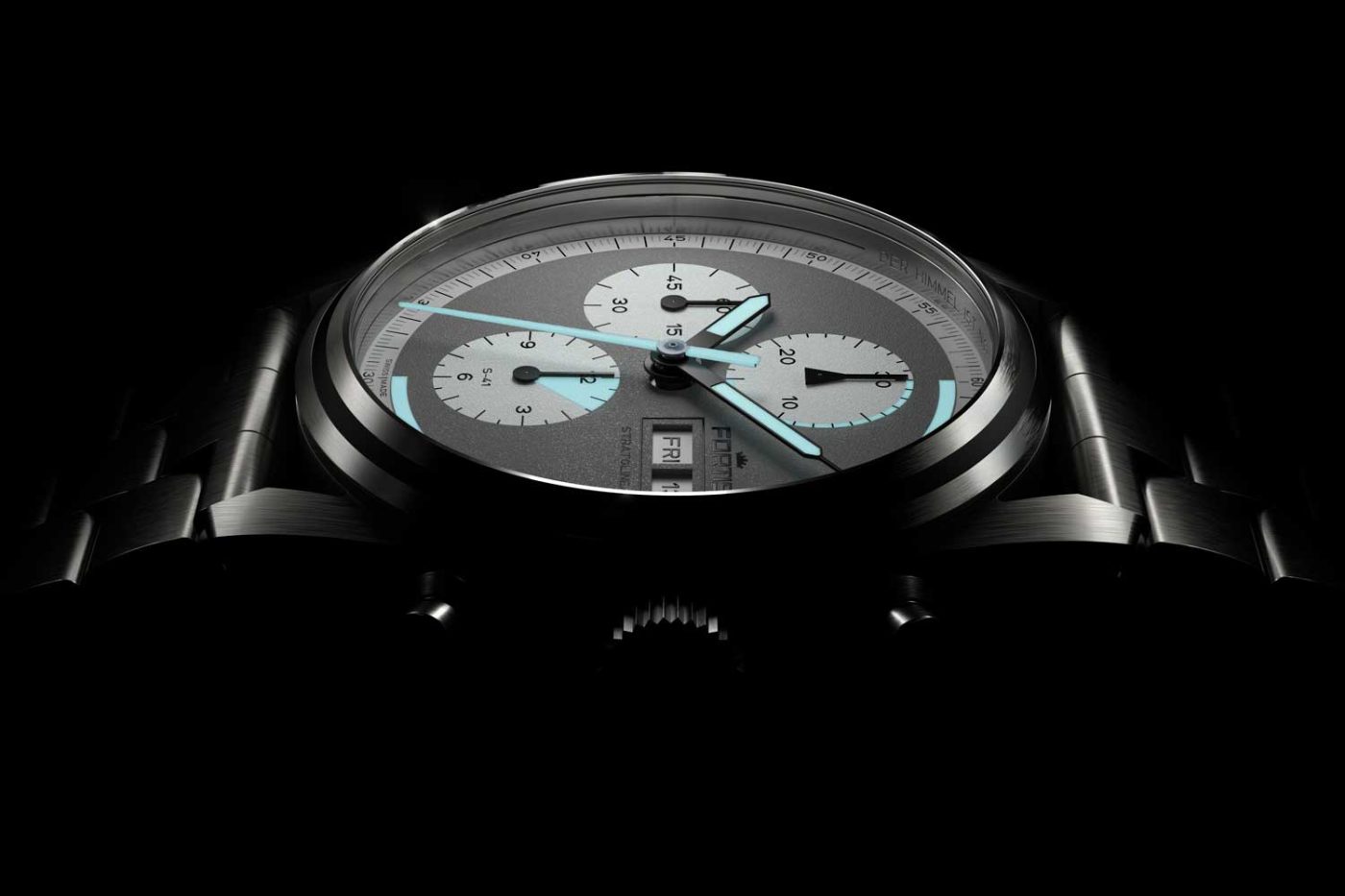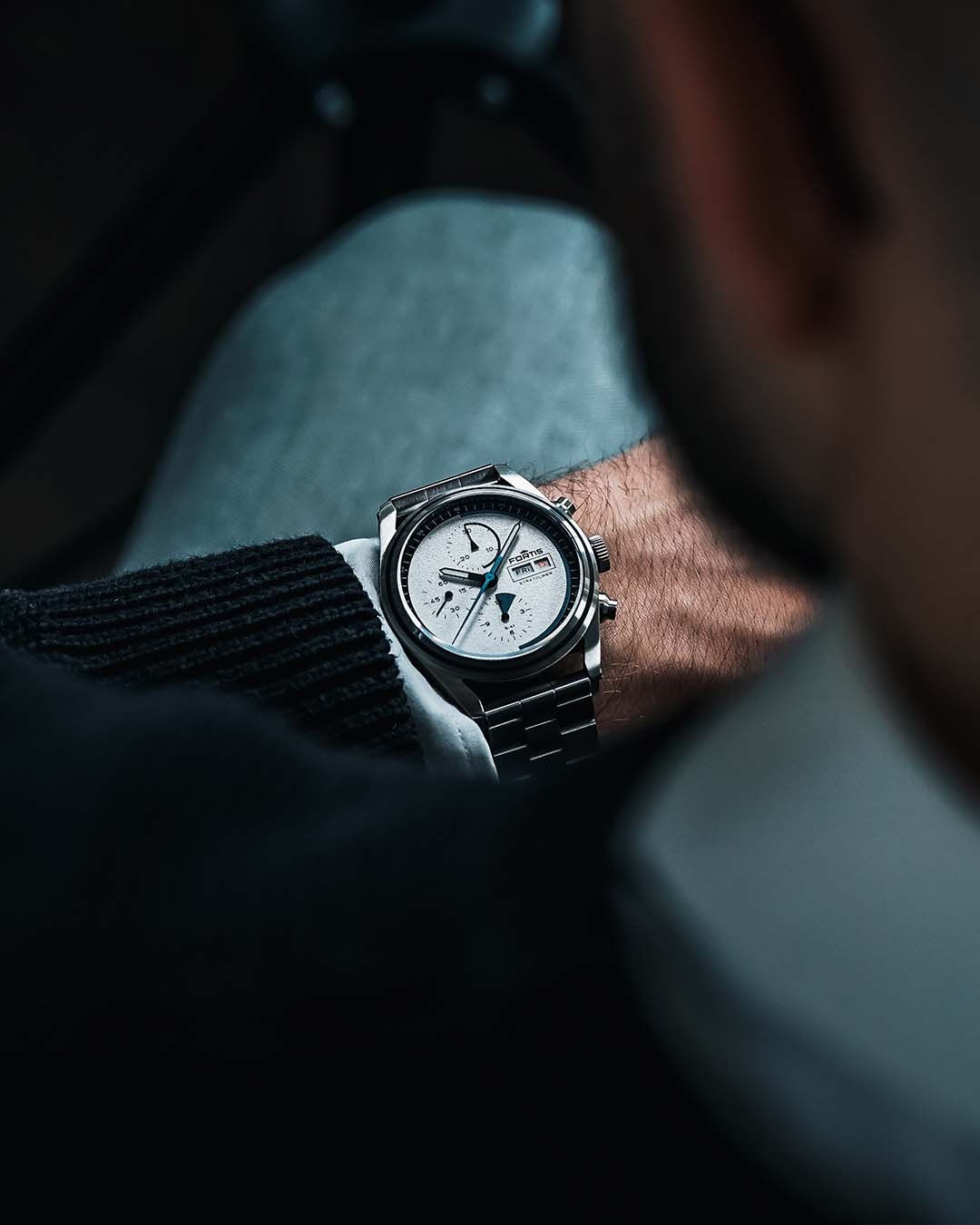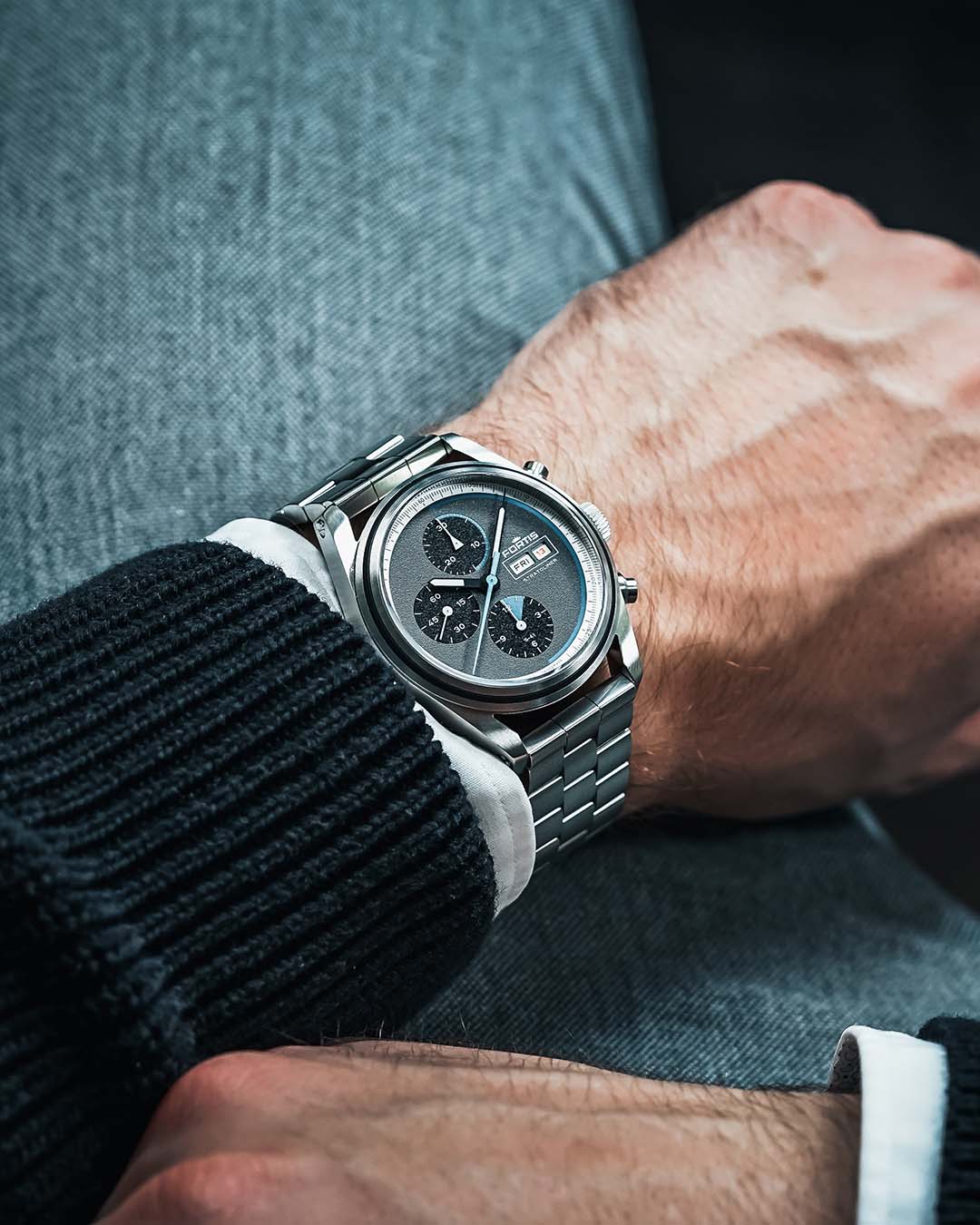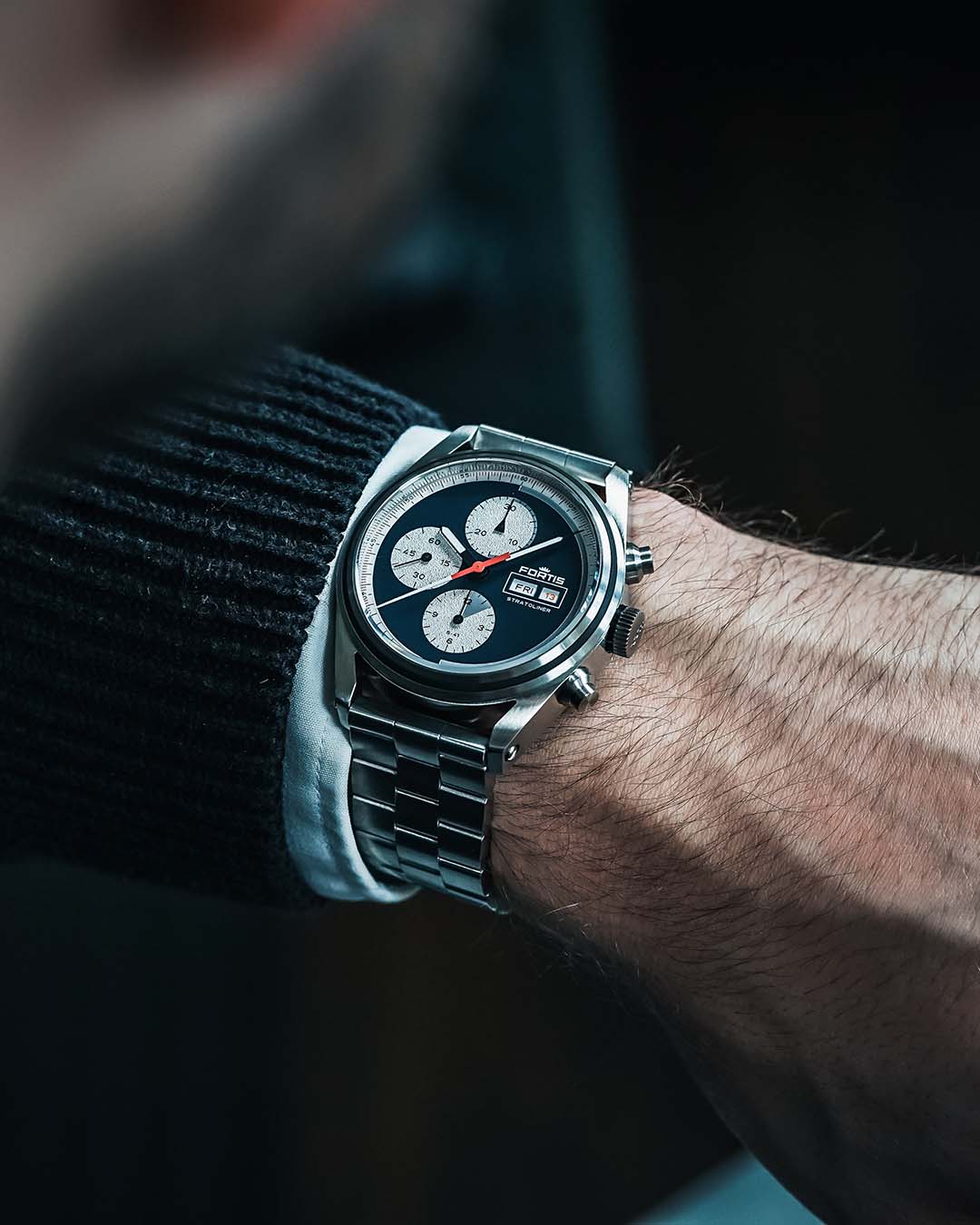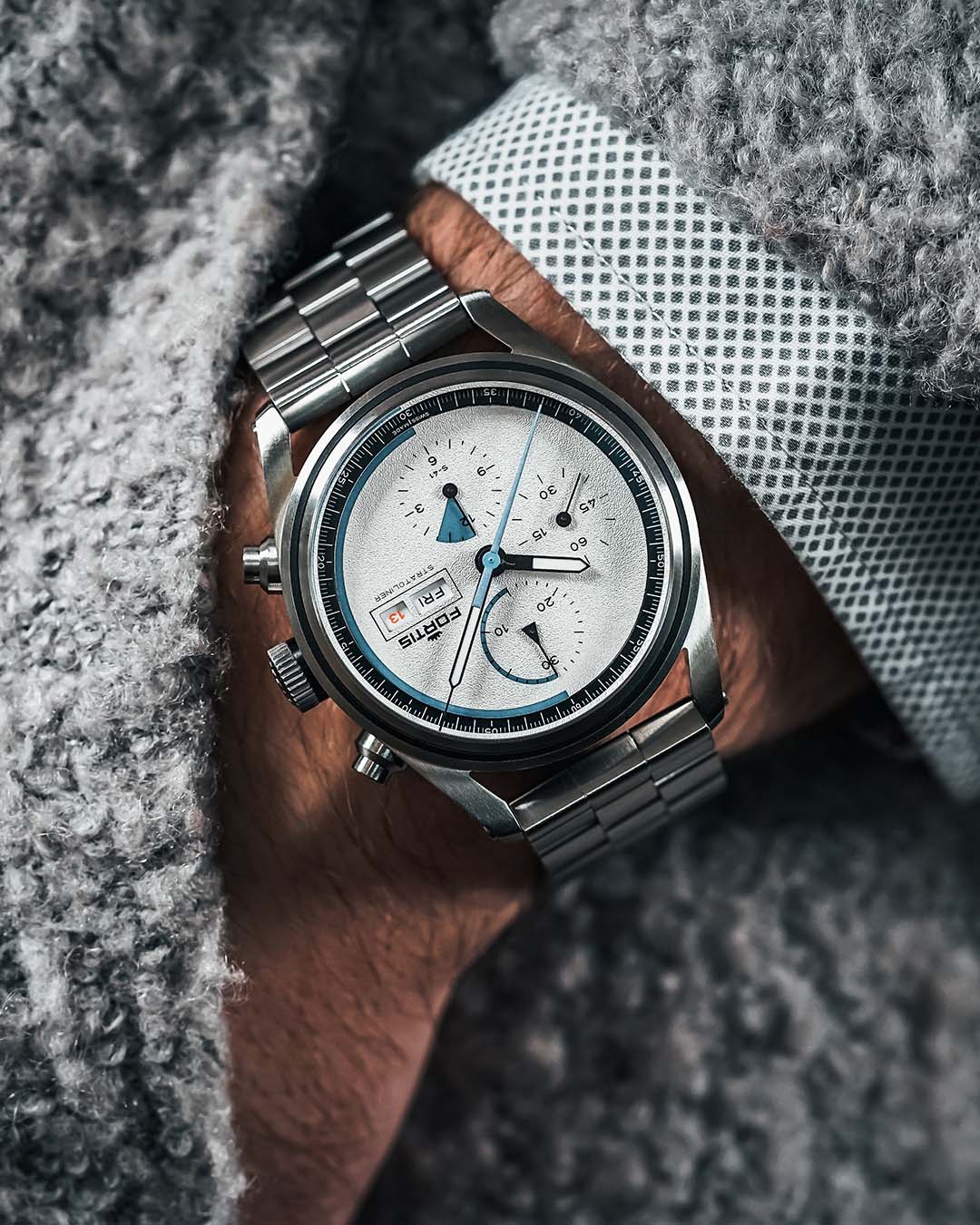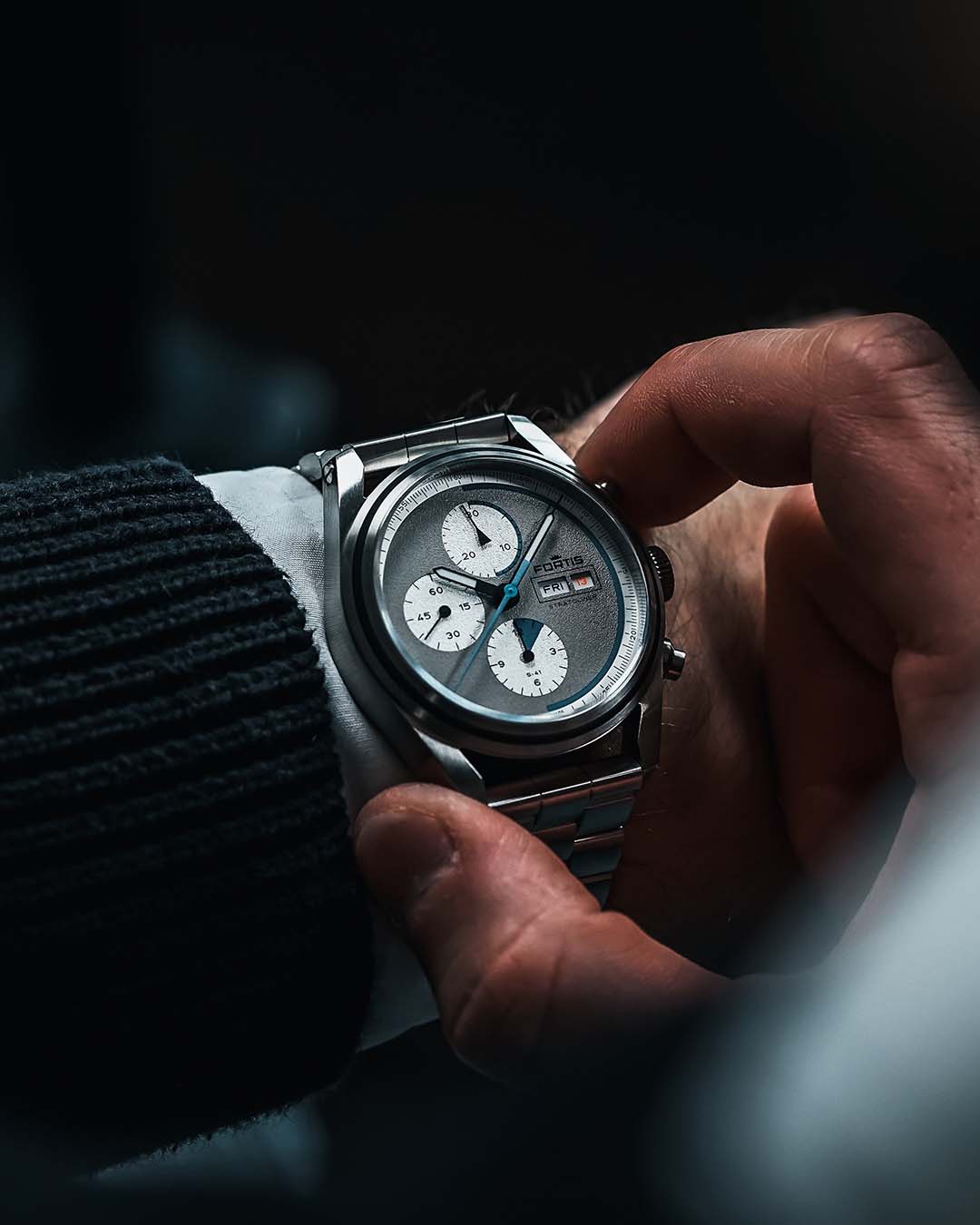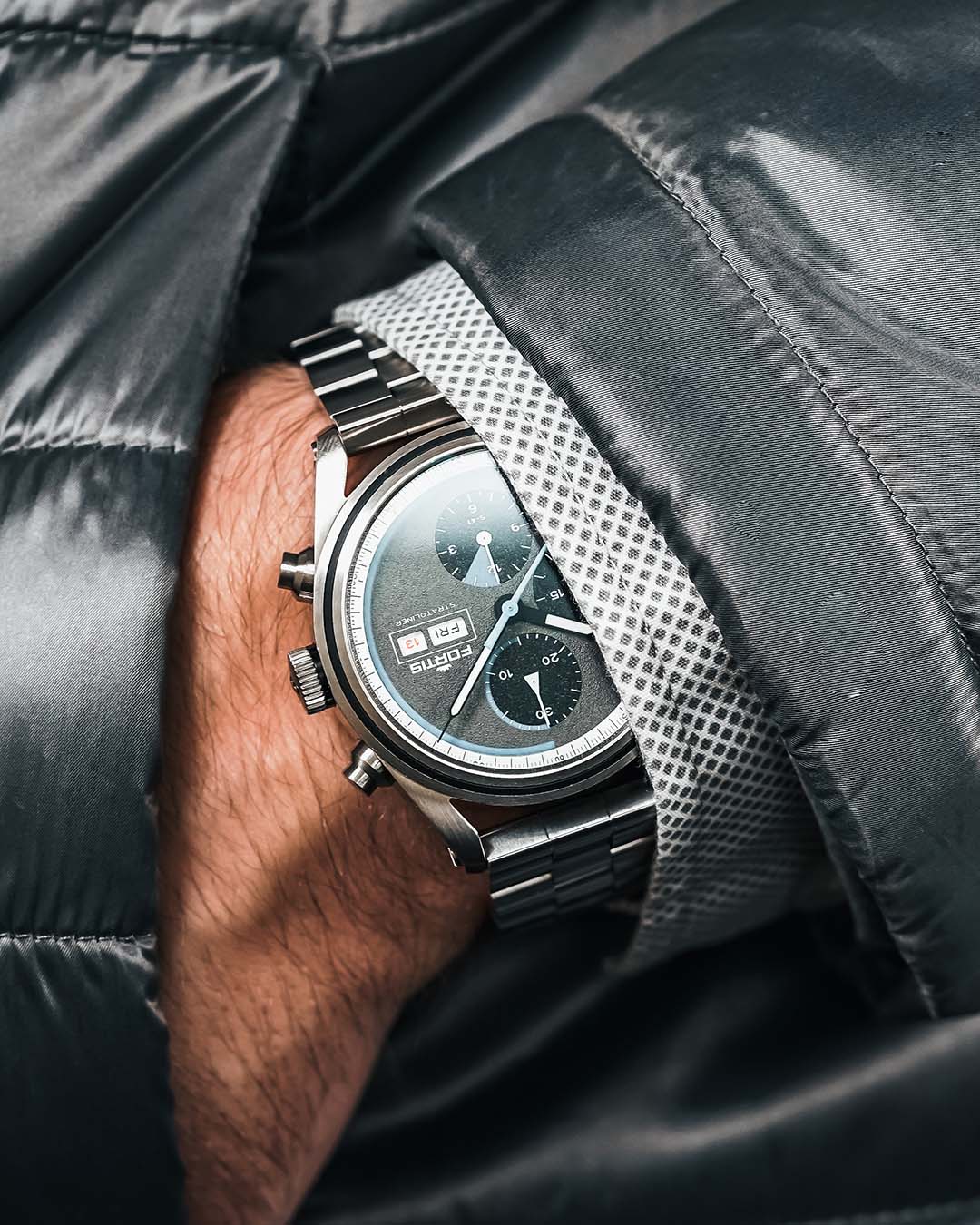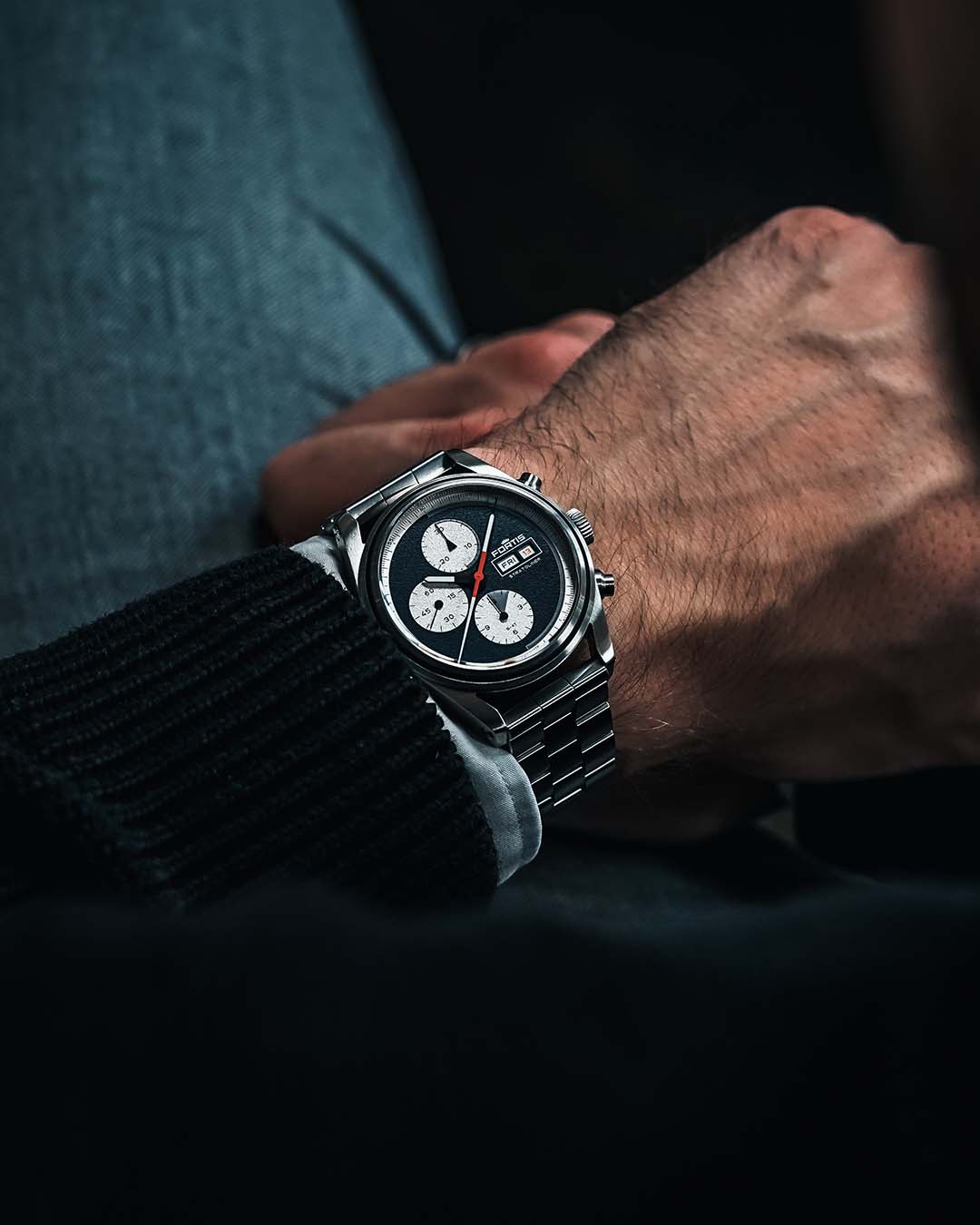BY ERIK SLAVEN
Fortis is no stranger to space travel. In 1994, a model called the Cosmonaut traveled with Russian cosmonauts to the MIR space station. At the time, Fortis supplied watches to Roscosmos, the Russian Space Agency. Ten years later (as the ISS replaced MIR), a second variant was designed for cosmonauts. It’s safe to say that the brand has some interstellar street cred and its latest trio of chronographs recently traveled to the edge of space to prove their mettle. Well, the movement did, which is a proprietary column-wheel chronograph called the Werk 17. 13 encased movements were strapped to a helium balloon and ascended to 30 kilometers, exposed to (almost space-like) harsh conditions for 90 minutes with a smorgasbord of sensors and cameras onboard.
Let’s take a closer look at the Werk 17. It was built in partnership with La Joux-Perret, so it’s more of a proprietary movement than in-house. Regardless, it’s very impressive with reinforced bridges and tangential micro screw regulation for added robustness if/when launched into space. It’s a little gimmicky as space travelers generally remain within a ship or space station without actually venturing into the black vacuum. Perhaps future moon walkers will put some through their paces. After retrieving the movements from the edge of space (thanks to the Swedish Space Corporation) only a couple had issues and it helped the brand tweak lubricants and other specifications to make the watches truly space-ready. Seen from the exhibition case back, the finishing is industrial with a dark grey matte finish and dedicated aperture highlighting the column wheel. Later this year, Fortis plans to launch a Werk 17 into open space for the ultimate validation. As far as specs, the (automatic) integrated column wheel chronograph beats at 4Hz with a 60-hour power reserve.
The brushed, recycled stainless steel case is 41mm in diameter and features an angled bezel with a black rubber insert. It doesn’t appear to act as a gasket, but provides a contrasting stripe that does look cool. The oversized crown screws down for a water resistance rating of 200 meters, so if you’re not going to space, you can explore the depths of the ocean. A sapphire crystal with anti-reflective coatings on both sides protects the dial, while a smoked sapphire exhibition case back adds a dramatic effect with the clear window over the column wheel. Twin pushers sit at 2 and 4 o’clock, operating 30-minute and 12-hour counters, and a 21mm stainless steel block bracelet or black leather strap comes fitted via external screws on the lugs. The bracelet features a sliding clasp for quick micro-adjustments.
There are three textured dial options – Cosmic Gray with a dark grey dial and black sub-dials, White Dust with a white dial and sub-dials, and Cool Gray with a light grey dial and off-white sub-dials. Fortis calls the grained texture a “Dust Dial” and they’re very anti-reflective. The tri-compax dials have a 30-minute counter at 12 o’clock, 12-hour counter at 6 o’clock and small seconds at 9 o’clock, and a split day/date window sits at 3 o’clock. The hour, minute and chronograph seconds hands are coated with Super-LumiNova X1, along with the first half of both the dial’s outer perimeter and 30-minute counter sub-dial. The first 1.5 hours on the 12-hour counter are also coated in lume. In regular light, those dial areas are blue and symbolize the different phases of Virgin Galactic’s stratospheric flight – the 1.5-hour climb phase, 15 minutes of zero gravity and the boost phase, which can be up to 90 seconds. The overall aesthetic is stripped down and all business, and really fits the spacefaring vibe. This is reinforced with an engraving at the top of the vertical ring on the dial’s outermost perimeter, “Der Himmel ist nicht das Ende der Welt.” This translates to “Sky is no limit.”
The three watches are now available and retail for EUR 5,300/USD 5,150 with the steel bracelet and EUR 4,950/USD 4,800 with the leather strap. Taxes are included with the Euro prices (not the USD).
They’re a bit pricey, but not too bad for such unique offerings that are ready for space travel. Look out for a fourth dial option, Blue Japan, with a blue dial and white sub-dials that will hit stores on July 13th (no online availability).
Visit Fortis here.

